“NO cadavers. Zero,” a former Eastern Mennonite University professor wrote recently about the large university where she now teaches. “A FEW students rely on a single cadaver that they travel to the local community college to see. Kudos to EMU for its unique and outstanding program.”
Dissecting cadavers at EMU, as the professor and alumni attest, is a unique and powerfully formative opportunity for undergraduate and graduate students. Again and again, alumni who dissected cadavers at EMU have said that:
- EMU grads enter medical school with more – and more in-depth – cadaver dissection experience than their medical school classmates.
- Other universities, EMU grads have been told by their peers, often offer only prosection dissections, demonstrations, or access to pre-dissected cadavers, in much larger student groups.
- EMU grads’ experiences dissecting cadavers – hands on, in small groups, with more labtime access – gives students increased confidence and knowledge.
- EMU grads often become leaders in their medical school cadaver dissection teams.
- How EMU professors approach the cadaver experience – through extensive study, celebration and honoring of the human body, and with great appreciation for body donors – contributes to how alumni express their medical calling.
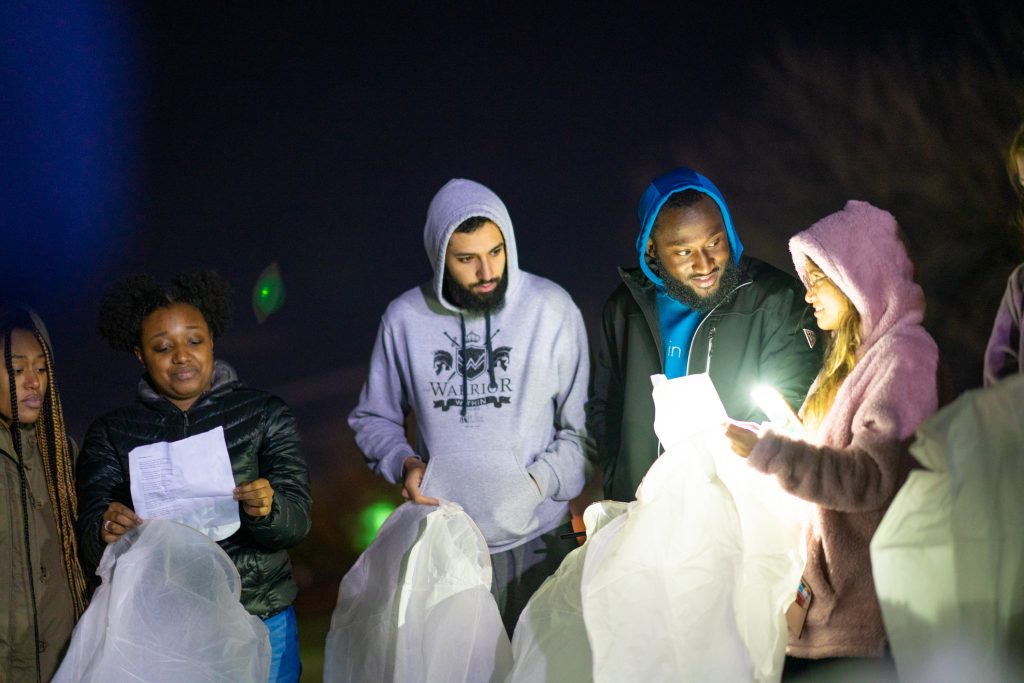
“The human body is truly amazing,” said Jessica Simms Morris MA ’17, now a first-year medical student at Liberty University College of Osteopathic Medicine. “The experience was invaluable, especially going into medical school. It has allowed me to be a step ahead in the anatomy lab, and allowed me the opportunity to focus on the smaller details of the cadaver dissection.”
Other EMU alumni who dissected cadavers as undergraduate students or in the master’s in biomedicine program share these sentiments. Here’s what they said about cadaver dissection at EMU:
Carissa Harnish ’15, Penn State College of Medicine
I found the experience to be very valuable and humbling. It is an honor to be trusted by others to take care of and learn from their bodies following their deaths. I am always amazed that people are willing to donate their bodies to scientific discovery, and am thankful that they do. Learning human anatomy in this way helped me to be more prepared for anatomy in medical school. I was more confident during anatomy lab than fellow medical students and became a leader in my anatomy groups. It also helped me to remember information more quickly during medical school, as it was my second time dissecting a cadaver. | Some of my colleagues had studied from cadavers at other places, but it was certainly the minority of the students. Most had attended larger universities without a cadaver program available to undergraduate students. | I enjoyed demonstrating the body parts to visiting high school students. Learning anatomy from a cadaver is a group activity – you have to work together and teach each other. My lab group definitely bonded over the experience.
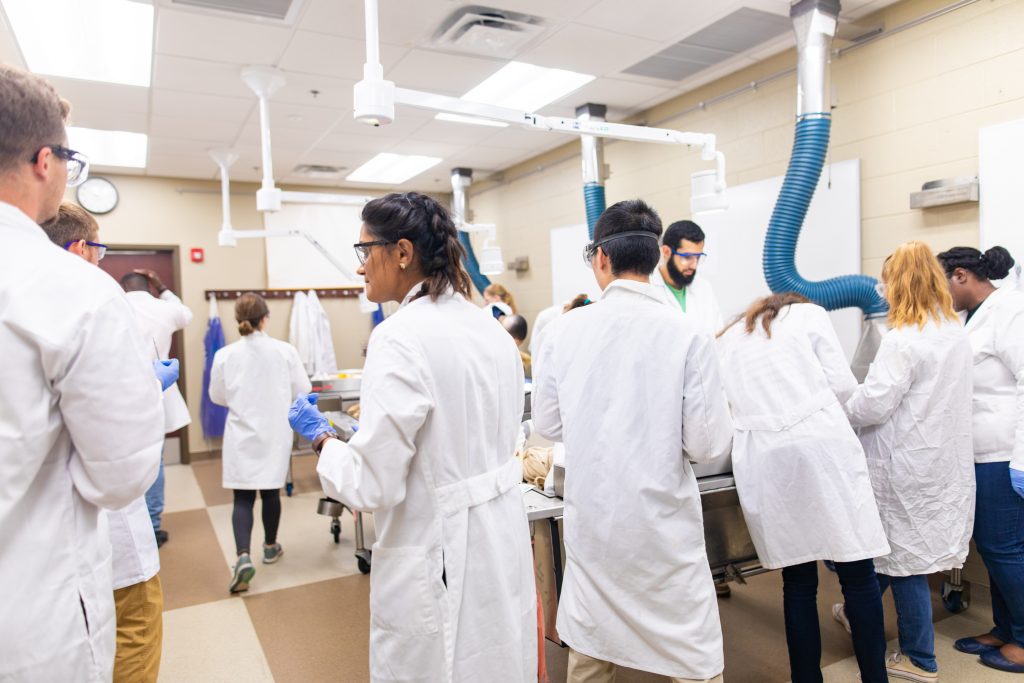
Samantha Kauffman ’18, Washington University School of Medicine
Studying cadavers at EMU was one of my first introductions to just how complex and beautiful the human body is. | From what I can tell, most of my classmates did not have the opportunity to work directly with cadavers before starting medical school. I found it really helpful during my medical school anatomy class to have a little bit of a head start. My dissection skills still aren’t perfect, but I definitely felt more comfortable in lab and with the material than I would have if I hadn’t been able to work in the cadaver lab at EMU, especially when it came to studying the muscles.
Katharine Lehman ’18, The Ohio State University College of Medicine
The human body is remarkably complex and beautifully constructed…this is a reality that a person can conceptually glean from a physiology class or by leafing through an anatomy atlas, but actually seeing and touching the structures is a far more powerful experience. Going into anatomy class, I already knew I was interested in studying medicine, but anatomy lab reinforced my passion for learning about the human body. | One element of the EMU cadaver program that I have appreciated the most was the reverence for human life that was emphasized throughout the course. On our first day of dissection, our class did a devotional together to celebrate the miracle of human life and to express gratitude for the incredible gift that the donors had given. The concepts that were cultivated in the anatomy lab continue to shape the way I think about my calling to medicine. | Now, as a first year medical student, I’m back in the anatomy lab. Many of my peers have had no dissection experience: most undergraduate anatomy programs have only prosection samples if they have any human specimens available at all. Even my classmates who did have anatomy dissection labs before medical school had far less hands-on time than I got at EMU, and the amount of experience they’re getting now is still less individualized than my undergraduate anatomy class was: Our lab groups in medical school are twice the size of the group I was in at EMU! | Cookies and Cadavers is an annual event at EMU where pre-professional health students and other interested students on campus have the chance to visit the anatomy lab and look at the dissections the advanced human anatomy class has done. I was one of the students who organized that event fall of my senior year, and I taught my peers about anatomy. In addition to students from the sciences, there were students from literature, mathematics, language, and the theater department represented, and they were all getting really into it – asking questions, taking turns holding the heart, and pointing out interesting structures with enthusiasm. It was such an incredible experience to have the lab full of students from a diverse range of disciplines enjoying the miracle of the human body.
Hannah Weaver Roth ’16, physician assistant working in surgical urology in Wichita, Kansas
I was so excited to learn anatomy on a real human body, and it was definitely as cool as I imagined. I remember feeling a lot of wonder during our labs and thinking “Wow, that’s actually what I look like inside!” | There’s a HUGE difference between learning anatomy from a textbook and exploring the body in a hands-on environment. Studying cadavers challenged my deductive reasoning as a student and showed me that the human body is far from cookie-cutter. I’m beginning my first job as a PA working in surgery, and a large part of my knowledge of how to find and identify structures came from learning with cadavers in my undergraduate and graduate education. I had much more hands-on experience and help from instructors in my undergrad cadaver lab than many of my PA school peers. Having personal direction from instructors is incredibly helpful when you’re trying to find and identify delicate structures that can easily be missed or have anatomic variations. | I remember seeing gallstones in my cadaver and diverticulosis on the other cadaver we had. I still bring up those mental images when I see patients with those disease processes. I also remember listening to the obituaries of our cadavers at the end of the semester and thinking what a generous gift it is to donate your body so that others can learn. | EMU did a great job of preparing me academically for PA school. I had an excellent physiology class in PA school, and I was able to excel in it (and help my peers out) because of a strong foundation I got in Roman Miller and Julia Halterman’s class. The same is true for many of my other undergrad science classes both at Hesston College and EMU. Keep up the good work!
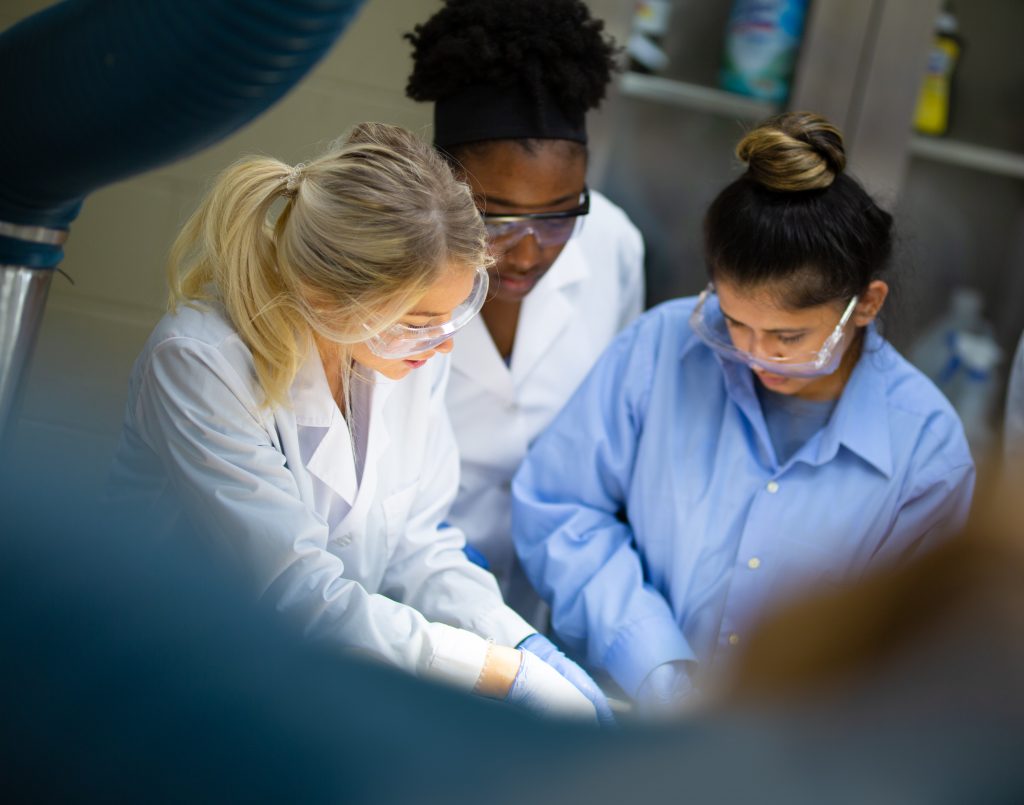
Jason Spicher ’15, Penn State College of Medicine
It was a powerful experience to do a human dissection. I felt that my professor did an excellent job framing the conversation about cadaver dissection prior to us entering the lab. | With the anatomy lab being a classic introduction to the first year of medical school, having done a full dissection prior to starting school was very helpful. I knew what to expect mentally entering into the lab and had information I could share with my classmates. | Other classmates of mine often would only do prosections, where they would look at structures that were previously dissected by anatomy grad students. Another common theme was that they would often have more students assigned to work on one cadaver. In my class at EMU, we only had teams of four dissecting a cadaver, so as a student I felt more involved and likely learned more from the experience. | I remember our professor reading a poem to us as a class about the gift of a cadaver. We spent the majority of the class period talking about the humanities associated with cadaveric dissection and that stuck with me as I entered into medical school.
David Abraham MA ’15 (biomedicine), Kentucky College of Osteopathic Medicine
The fact that individuals donate their bodies to science so that I and my classmates can better understand the human body and treat patients once day speaks a lot to the selflessness of those donors. Working with the donor bodies was a huge honor at that point in school because I felt that for many of us, the donors were our first patient. It is incredible to see structures within the body in their natural state that most people will only experience by looking at pictures in textbooks. Working with the donors made me feel like I was living medicine and not just another student reading a textbook and learning anatomy through illustrations. Not a lot of graduate students in post-bac programs get an hands on anatomy experience with donors, so I felt unique in that sense. | Using the donors at EMU made the transition into Anatomy much easier in medical school. Anatomy was the most difficult and time consuming class my first semester in med school, so having the experience of working with donor bodies made it so much easier to learn. I learned how to dissect in grad school so by the time I got to medical school, I could spend more time looking at structures and learning rather than trying to dissect it out. I’m in a surgery rotation right now and I get pumped everyday on various structures that we learned in Anatomy. When coming up with differentials to diagnose a patient, I go back to my fundamentals of anatomy and think about the different organs in that region the patient may be experiencing pain in and the possible pathologies of those organs. Anatomy is fundamental to medicine and the more experience I had with the cadavers, the easier thinking through problems became. | Everyone who shared a donor body or a donor body around me during medical school had never had experience working with donor bodies previously. This gave me a leg up during medical school because I knew how to dissect and what I would be encountering each day. It made anatomy during medical school easier for me than it did my peers and it provided me opportunities to teach my classmates when we first started dissecting. | Anatomy was one of my fondest memories at EMU. Looking back and comparing it to anatomy during medical school, it is a completely different experience. The small class size and having fewer people to each donor body than in medical school made it a hands-on personalized experience. Julia, the instructor at the time, was incredible and turned a class that could be so daunting into an amazing educational experience that we were all excited to show up for. On our last day with the donors at EMU, we got to dissect whatever we wanted that we had not done yet. I’m glad I took opportunities that day to dissect some of the things I did that day because in medical school we were never given that option.

Adrian Hackney ’07, MA ’10 (conflict transformation), West Virginia School of Osteopathic Medicine
Nothing else really puts into light so powerfully the notion that we are “fearfully and wonderfully made.” | Cadaver dissection allows you to understand, inspect, and contemplate the human body and all its parts and functions at the most basic level, and simultaneously appreciate what miraculous and awesome machines we are. It was also meaningful as an exercise in materialism, vanity and viewing death and physical decomposition not as a thing to fear, but rather, as a beautiful and natural process of our existence and transition from a physical life to a purely spiritual one. It was deeply humbling to consider the people who chose to gift their bodies to us as students for this purpose. | In my class of over 200 students in medical school, I was only one of two or three students who had previous experience working with cadavers. There is a learning curve, and because I was coming in with previous experience not only in direct human anatomy but also in dissection technique, I was able to work with my classmates to help them and to ensure we were all getting the most out of the experience possible from the very beginning. | There simply is no replacement for the kind of learning you can achieve by the process of dissection, inspection, touch and sight of the human body. When you can look inside the body at all the organs, the relationship of each part to another, the relative size, shape, and three-dimensional aspect of each piece, you really begin to understand all the theoretical pieces of knowledge you’ve garnered from your books and lectures and how they work together as corresponding systems to keep the body alive, functional, and thriving. | I have a much more thorough understanding of the human body, and it is something that I can explain to my patients that helps them understand themselves and their experiences. It is an amazing gift that continues to be of value every day.
Kenny Hyden, Jr. ’07, MA ’14 (biomedicine), West Virginia School of Osteopathic Medicine
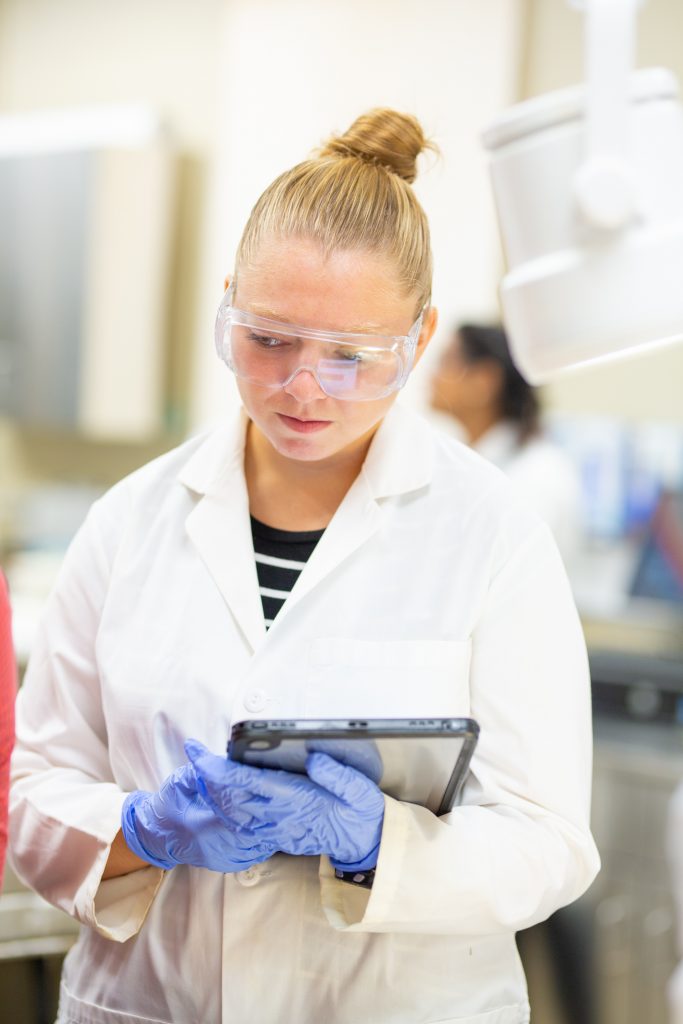
It was not my first experience with cadavers, as we had used some for training in my EMS career. It was, however, the first time I was able to go through the entire human body [and it continues to help with] being able to place things in real 3D in my mind when thinking about anatomy. Most of my medical school colleagues did not have the opportunity nor were required to do gross anatomy for their degree programs prior to medical school. This put me ahead of them in the anatomy lab. I often times was helping them understand and identify things. Also, my dissecting skills were better.
Vincent Morra MA ’15 (biomedicine), West Virginia School of Osteopathic Medicine
Learning anatomy in a textbook or via digital apps is one thing, but learning it from a human donor is something completely different. Having the hands-on experience is very valuable, because when you personally dissect and study the human body you learn and see so much more. On top of that, no human body is “textbook perfect.” We all have our differences, and it’s not until you have the opportunity to personally dissect donors that you can visualize and learn from these differences. | The thing that sets EMU’s anatomy lab apart from most other universities is the fact that students have the opportunity to dissect and learn from cadavers at the undergraduate level. Most of the time it is not until one’s professional schooling that students have the opportunity to personally dissect. | Dr. Halterman was (and still is!) an awesome anatomy professor! I thoroughly enjoyed learning from her when I was at EMU!
Shanae Ikeea Scott MA ’17 (biomedicine), University of Pikeville, Kentucky College of Optometry
The experience was fantastic. I think it’s great to learn the anatomy and physiology first hand with something other than textbook or internet sources. It also allows students to both see and understand the body in terms of how delicate or how tough/rigid the body can be. | Although my focus now is on eyes, a lot of systemic conditions can be seen in the eyes, even before there are signs and symptoms elsewhere. It is essential to understand how the body is all linked together as a unit. | From my understanding, many students from other universities have not received the opportunity to do cadaver dissections. They may or may not have done smaller animal dissections, so it certainly gives the program as well as the student great benefit by having had the exposure before entering a professional school or another graduate program. | It was great just having a visual other than a picture for the purposes of exam day. Many students including myself are visual learners. Seeing it first hand, along with having done the dissection, helped to answer examination questions.
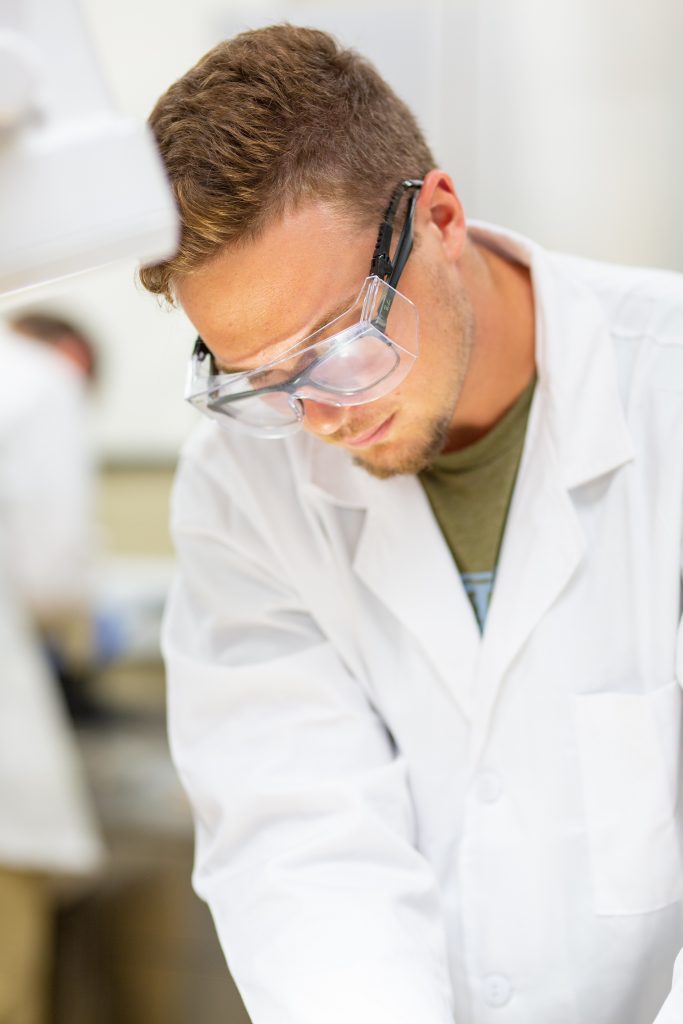
Ruchir Shah MA ’16 (biomedicine), Howard University College of Dentistry
This experience really helped me solidify my decision to be a healthcare professional. | As a student, I felt blessed to partake in an experience, which many aren’t fortunate to have. It was relevant to every course I took during my masters program. | As a healthcare professional, I use the knowledge gained within this experience to help educate my clients on how anatomical structures relate to others. As a future dental student, I believe this experience will serve as a foundation for the rest of my education. | Studying cadavers at EMU was an unparalleled experience. At EMU, you’re able to study the person in depth and connect on a personal level. You have the luxury of being able to dissect the individual outside of class and spend as much time as you desired. | My current colleagues who took anatomy at different universities had a completely different experience. For example, the cadaver was dissected for them and they had extremely limited time to spend with the individual. They told me that most students at these universities took the class to “fulfill requirements rather than enjoy the subject.” Others said that they did “more memorizing of the names of the muscles than actually studying the body.” I was truly fortunate to have the opportunity to study cadavers at EMU. | My fondest memory of cadaver dissection was chiseling open the mouth and extracting a tooth. I have dreamed of being a dentist for the past decade and I performed my first extraction on an individual I had been connecting with for five months. It was truly an unforgettable experience. | The course I took was a reflection of the professor. Dr. Halterman’s ingenuity and collaborative teaching style allowed for all of her students to properly learn from this course.
Chang Tan MA ’18 (biomedicine), Edward Via College of Osteopathic Medicine
I believe that I have gained appreciation toward medicine (particularly surgery) through learning and visualizing the human body system structurally and functionally. | This was one of the unique experiences that I brought to my medical school interviews. | I have studied anatomy as an undergraduate student at [a larger university] and felt that the bigger class size there in both lecture and laboratory settings made it difficult for me to fully appreciate the subject, as everyone would just be crowding around one cadaver that is already being dissected. The cadaver experience at EMU was much more valuable to my learning goals and I enjoyed every moment of it.

Very well written article and a very important topic. Clearly EMU’s approach has
proven beneficial to students over time. I also have complete confidence that
appropriate discretion and respect is given the donors. Having said that, here are
some questions. Are there enough cadavers, where do they come from and if there
is a need for more, is this another gift to EMU that supporters can a bequest ?
Here is an answer from Dr. Julia Halterman, director of the MS biomedicine program:
EMU is high up enough on the anatomical board’s list to receive donors that we’ve never experienced a shortage, even after we doubled our anatomy lab capacity from 2 to 4 cadavers a few years back. However, I don’t know if they have to turn other universities/medical facilities away due to a shortage of donors. The Virginia State Anatomical Program (VSAP) is always looking for more people to donate their bodies, and anyone over the age of 18 can do so by contacting the VSAP. If the individual lives outside of the state of Virginia, their state should, most likely, have a similar anatomical program. Donors can request that their body is sent to a specific facility, but in the end their request will most likely not be fulfilled. There are many factors that lead into where a body is sent – the date of death needs to correspond closely to the date that a university/medical facility has requested delivery of a donor body, and there are other physiological and anatomical parameters that must be met following testing and processing of the bodies at VSAP. I would encourage residents of Virginia interested in donating their bodies to contact VSAP to learn more.